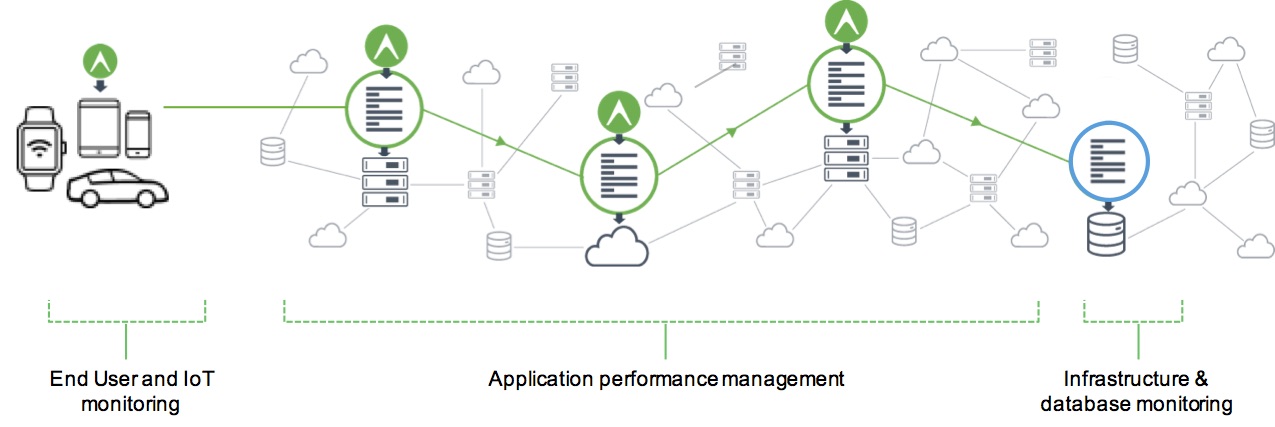Over the last few years, the Internet of things (IoT) has become a trending phrase for consumers and a top priority for businesses embarking on their digital transformation. Even with the growth and interest in IoT however, the meaning can still confuse people.
So, what is IoT? IoT is a network of things connected to the internet and is uniquely identifiable through its embedded computing system. These “things” may include a variety of devices like home appliances, commercial vending machines, fitness trackers, industrial gateways, connected cars, and smart factories.
And worldwide spending on IoT devices is on the rise, with IDC’s Worldwide Semiannual Internet of Things Spending Guide predicting that global spending in IoT will leap from over $800 billion in 2017 to $1.4 trillion by 2021. This increase is attributed to continued investments made by organizations in the hardware, software, services, and connectivity that enables IoT. The goal of these IoT investments? To drive operational efficiency and increase revenue through improved consumer experience.
For example, the transportation industry is using sensors to improve fuel usage in planes and trucks, while the industrial sector is using IoT to reduce gas leaks. Environmental sensors for humidity, CO2, and electricity sensors also help reduce energy costs for buildings.
On the other hand, IoT in sectors like retail, automotive, and media are more focused on providing consumers with a rich experience by enabling new device interactions and avenues to consume data. For example, the retail industry is using devices such as smart shelves, point of sale, and digital signage to significantly improve consumer experience in brick-and-mortar stores to drive more sales. There are also voice-controlled devices like the Amazon Echo and Google Home, which offer a premium experience by allowing consumers to play music, stream podcasts, provide weather updates, control your smart home, and more.
And it’s these type of consumer experiences that drive sales and customer loyalty. In fact, IDC reports that consumer IoT spending will be the fourth largest market segment in 2017 at $62 billion, and will jump to the third largest segment come 2021.
Monitoring IoT Performance
As the number of IoT devices in the consumer and business space increase, as will the complexity of the infrastructures needed to support the new services and touch points. With this increasing software complexity, there is also a correlated demand from users for highly-responsive, real-time digital services.
As a result, a toolset to measure and deliver an exceptional end-user experience is imperative for making an IoT application successful. And that’s precisely where AppDynamics can help. AppDynamics IoT monitoring provides visibility into your connected device applications for real-time performance diagnostics and usage analytics so you can quickly understand and resolve performance issues.

Fig 1: AppDynamics End-to-End Performance Monitoring
In Figure 1 above, you can see how AppDynamics’ end-to-end unified monitoring solution provides visibility into a complex software infrastructure. AppDynamics follows the transaction at each hop, starting from a connected device to a data center, network equipment, and all the way to the database.
AppDynamics End-User Monitoring provides great visibility into browser and mobile applications and now – with our Winter Release – we are extending it to monitor all connected devices.
IoT Monitoring Requirements
Before we built our IoT Monitoring Platform to help operations teams manage IoT applications efficiently, it was important for us to understand monitoring requirements from both the technical and business end. We built our platform with the below technical and business requirements in mind.
Technical Requirements
– Ability to monitor IoT applications that run on devices with different processor architectures (e.g., ARM7, x86, Cortex-M series), and a multitude of operating systems. (e.g., embedded Linux, QNX, mbed OS, VxWorks)
– Ability to monitor IoT applications written in multiple languages (e.g., C, C++, Java, Python, Javascript, Node.js).
– Overhead for monitoring IoT applications should be minimal and operate within device constraints such as memory, computing resource, and network connectivity.
– Ability to ingest data generated by IoT applications that can vary significantly based on application type. For example, an industrial gateway device might generate gigabytes of sensor data whereas a point-of-sale device may trigger thousands of user transactions per day.
Business Requirements
– Ability to manage the complexity of software and services offered on the new IoT device types and applications. IT needs to detect issues proactively and keep MTTR low.
– Ability to provide the same user experience, independent of device type.
– IoT devices generate tremendous amounts of data and it’s important to be able to get insights into the business performance quickly.
– Ability to correlate business performance with IoT application performance. For example, when a business is losing money, it should be easy to quickly identify the root cause of a performance issue.
– Ability to react to real-time alerts on application or business performance issues.
Stay tuned for the next blog post in this series, where we’ll dive into the technical details of AppDynamics’ IoT product offering, how we solved design challenges, and how we’re helping businesses tackle IoT proliferation.
Learn more about IoT Monitoring or schedule a demo of our product today.